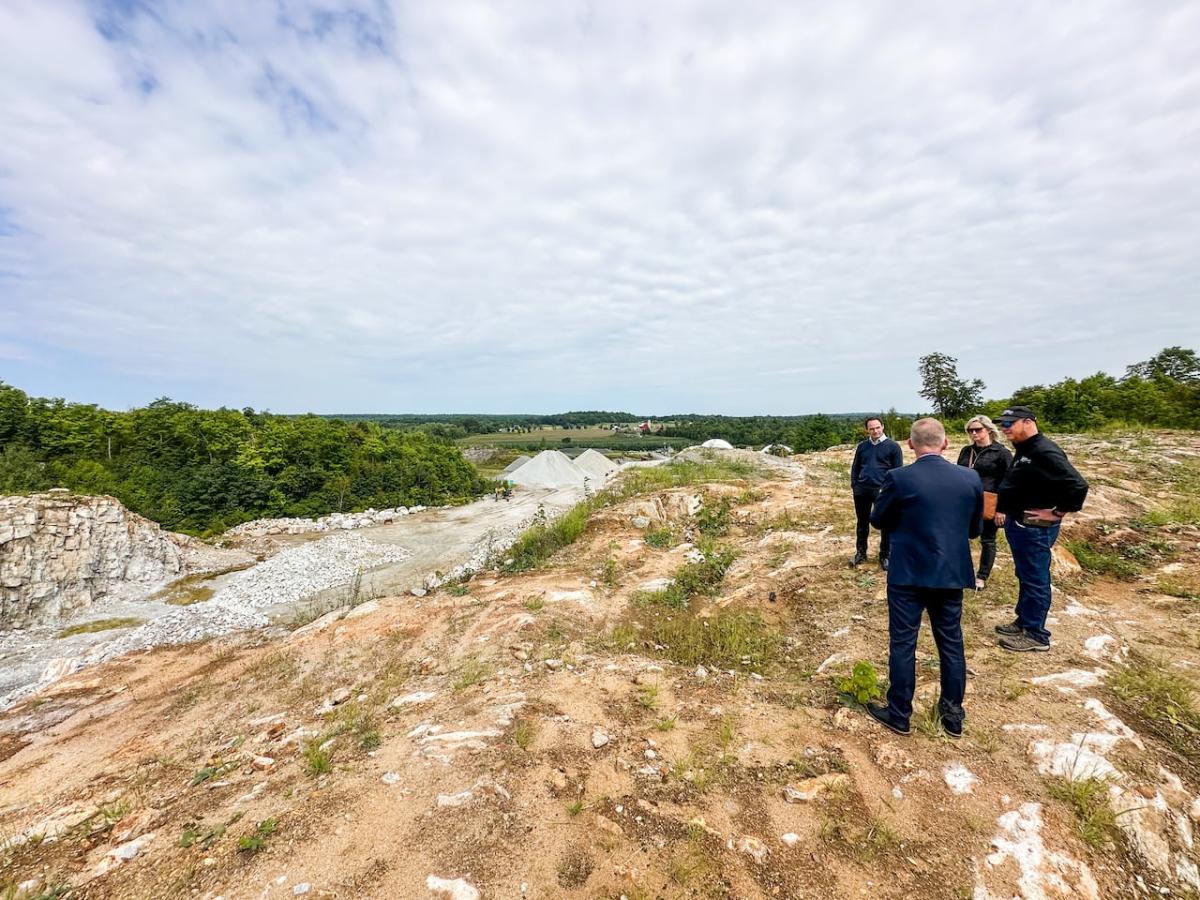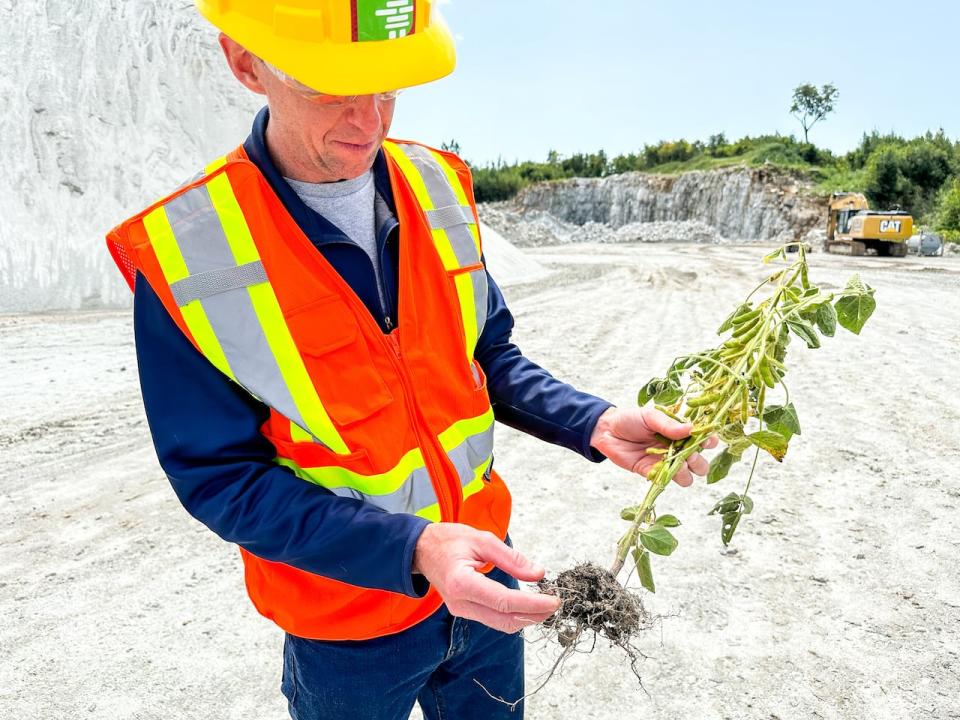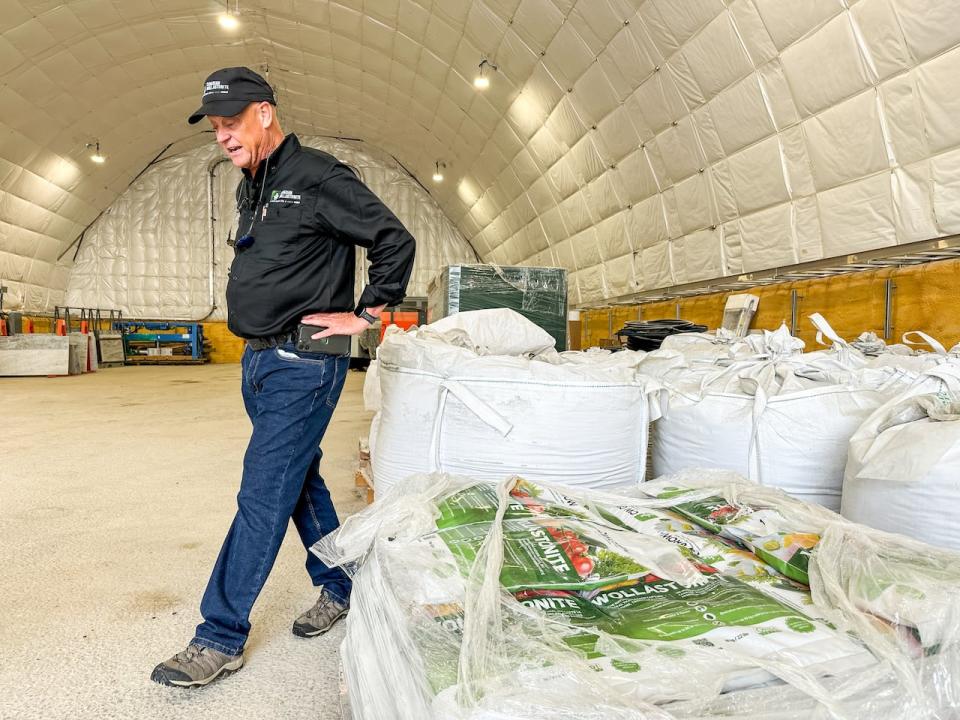


Farmers in eastern Ontario are cautiously embracing a new mineral that promises to boost crop yields while also capturing atmospheric carbon.
Canadian Wollastonite is the Seeley’s Bay, Ont., mining company behind the project, and has partnered with U.K.-based UNDO, a nature-based carbon removal company.
Wollastonite is the calcium- and silicate-rich mineral deposit derived from ancient fossilized limestone.
The bright white mineral is blasted from the walls of an open quarry, crushed into a grit and then broadcast onto fields using lime-spreading equipment.
The man behind Canadian Wollastonite, Bob Vasily, claims that for every 1.6 tonnes of crushed wollastonite spread, one tonne of carbon dioxide is captured.
While some of the Seeley’s Bay aggregate is sold to the steel industry where the mineral is used as a slag replacement, some is sold to cement producers interested in lowering their CO2 output.
But Vasily said wollastonite’s role in what he calls “enhanced rock weathering” is its greatest potential.
“The ability to use farmers and farmland to capture millions of tonnes of carbon is unmatched for us,” he said.

Project manager Harris Ivens examines a soybean plant grown on a nearby farm where wollastonite has been spread. (Stu Mills/CBC)
Wollastonite’s huge potential
Vasily believes there’s enough of the material on the company’s property to remove ten million tonnes of atmospheric carbon, “bigger than all other North American projects,” he claimed.
With the mineral crushed into a gritty powder, the stone’s surface area is vastly increased and reacts more rapidly with CO2-saturated rainwater.
Wollastonite is “weathered” or broken down, releasing nutrients and bicarbonates beneficial to crops, but which also eventually end up in the oceans as solid carbonate minerals, permanently removing atmospheric CO2.
“There is some interest on the environment side and agriculture playing part of the solution to climate change,” said Harris Ivens, project manager for Canadian Wollastonite,
He said the mine’s farming customers who are typically skeptical of new agricultrual treatments have begun to accept wollastonite as a pH-stabilizing alternative to lime.
He said silicon in the mineral — what Ivens calls “nature’s crop insurance nutrient” — improves the plant’s natural pest and disease response.
The cost of the wollastonite itself is offset by carbon credits, so farmers pay only for the trucking.
Vasily said what’s being done in eastern Ontario at his mine could be scaled up and replicated with other silicate rock deposits right across Canada.
The slow, patient approach to capture carbon replicates what already happens in nature over thousands of years.


Vasily and Canadian Wollastonite have developed industrial and agricultural markets large and small, including the home gardener, for the mineral. (Stu Mills/CBC)
On a farm field outside Kingston, Ont., last week, a big green tractor towing a silver trailer cast fine white grit behind it.
Famer Charlie Forman said he hopes giving the process a gentle poke will allow him to decarbonize some of his soybean production, but also offer a sustainable way to improve soil health and productivity.
While the tractor and other loading equipment emits some CO2, this operation will fight against global warming.
“If I can say to somebody, ‘We’re doing our part to offset the problems we create with CO2,’ I feel good about that,” said Forman.
Vasily said the mine is adding a solar energy installation and converting as much of the operation as possible to electric power.


Canadian Wollastonite claims that for every 1.6 tonnes of crushed wollastonite spread, one tonne of CO2 is captured. (Stu Mills/CBC)
Searching for new markets
Canadian Wollastonite and UNDO claim that for every 100 tonnes of CO2 removed through the spreading of wollastonite, fewer than 10 tonnes of CO2 are emitted in the process of mining, crushing and milling.
The company is trying to find markets for all the aggregate, even offering dazzling marbled white wollastonite kitchen counter tops for the environmentalist who has everything.
Finely crushed wollastonite is packaged in 10-kilogram bags and marketed to home gardeners who can sprinkle the material on their garden beds and capture five kilograms of atmospheric carbon permanently.
“This is an all-hands-on-deck situation,” said Warren Mabee, the director of the Queen’s Institute for Energy and Environmental Policy in Kingston.
But enhanced rock weathering shouldn’t be treated as a silver bullet, but one approach in the de-carbonization toolbox, Mabee cautioned.
“We’re not looking for a single solution. We’re looking for many solutions.”